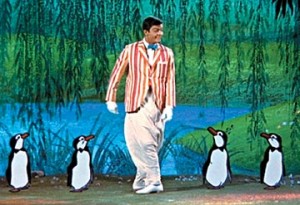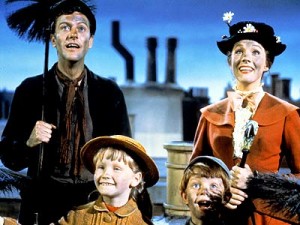Finding Nemo
Posted on May 21, 2003 at 1:10 pm
Pixar Studios may have the most advanced animation technology in the world, but they never forget what matters most in a movie: story, characters, imagination, and heart. “Finding Nemo” has it all.
It is an epic journey filled with adventure and discovery encompassing the grandest sweep of ocean vastness and the smallest longing of the heart.
Marlin (Albert Brooks) is a fond but nervous and overprotective clown fish. A predator ate his wife and all but one of their eggs. The surviving egg becomes his son Nemo (Alexander Gould), and when it is time to start school, Nemo is excited, but Marlin is very fearful.
Nemo has an under-developed fin. Marlin has done a good job of making Nemo feel confident and unselfconscious. They call it his “lucky fin.” But it still makes Marlin a little more anxious about protecting Nemo, and it still makes Nemo a little more anxious about proving that he can take care of himself.
On his first day of school, Nemo swims too far from the others and is captured by a deep sea diver, a dentist who keeps fish in his office aquarium. Marlin must go literally to the end of the ocean to find his son and bring him home.
And so, in the tradition and spirit of stories from the Odyssey to “The Wizard of Oz,” Marlin takes a journey that will introduce him to extraordinary characters and teach him a great deal about the world and even more about himself. He meets up with Dory (Ellen DeGeneres), a cheerful blue tang who has a problem with short-term memory loss. They search for Nemo together, despite stinging jellyfish, exploding mines, and creatures with many, many, many, many teeth.
Meanwhile, Nemo has made some very good friends in the dentist’s aquarium, including a tough Tiger Fish (Willem Dafoe) who helps him plan an escape before the dentist can give Nemo to his careless eight-year-old niece, whose record with fish portends a short lifespan.
The movie is a visual feast. The play of light on the water is breathtaking. The characters imagined by Pixar in “Monsters, Inc.” were fabulously inventive, but they have nothing on the even more fabulously inventive Mother Nature. This movie will make an ichthyologist out of anyone, because all of the characters are based on real-life ocean species, each one more marvelous than the one before. While preserving their essential “fishy-ness,” Pixar and the talented people providing the voices have also made them each wonderfully expressive, and it seems only fair to say that they create performances as full and varied as have ever been on screen.
There are some scary moments in this movie, including the off-screen death of Marlin’s wife and future children. It is handled very discreetly, but still might possibly be upsetting to some viewers. There are terrifying-looking creatures, but one of the movie’s best jokes is that even the sharks are so friendly that in an AA-style program, they keep reminding each other that “we don’t eat our friends.” There really are no bad guys in this movie — the danger comes from a child’s thoughtlessness and from natural perils. The movie has no angry, jealous, greedy, or murderous villains as in most traditional Disney animated films.
Another strength of the movie is the way it handles Nemo’s disability, frankly but matter-of-factly. But best of all is the way it addresses questions that are literally at the heart of the parent-child relationship, giving everyone in the audience something to relate to and learn from.
And there is another special treat — the chance to see Pixar’s first-ever short feature, “Knick-Knack,” shown before the feature. It shows how far the technology has advanced, but it also shows that Pixar’s sense of fun was there right at the beginning.
Parents should know that even though there are no traditional bad guys in this movie, there are still some very scary moments, including creatures with zillions of sharp teeth, an apparent death of a major character, and many tense scenes with characters in peril. At the beginning of the movie, Marlin’s wife and all but one of their eggs are eaten by a predator. It is offscreen, but might upset some viewers. There is a little potty humor. The issue of Nemo’s stunted fin is handled exceptionally well.
Families who see this movie should talk about how parents have to balance their wish to protect their children from being hurt (physically or emotionally) with the need to let them grow up and learn how to take care of themselves. They should talk about Nemo’s disability and about everyone has different abilities that make some things easier for each of us to do than for most people and some things harder. How do you know what your abilities are, and what do you do to make the most of them?
Families who enjoy this movie will also enjoy the other Pixar films, “A Bug’s Life,” the “Toy Story” movies, and “Monsters Inc.” They will appreciate other movies with underwater scenes, including Disney’s “The Little Mermaid,” “Pinocchio,” and “Bedknobs and Broomsticks,” and “Yellow Submarine,” with innovative animation, a witty and touching script, and, of course, glorious music from the Beatles. Families with younger children will enjoy reading “The Runaway Bunny,” and families with older children will enjoy “Amazing Fish” from the outstanding Eyewitness series.


